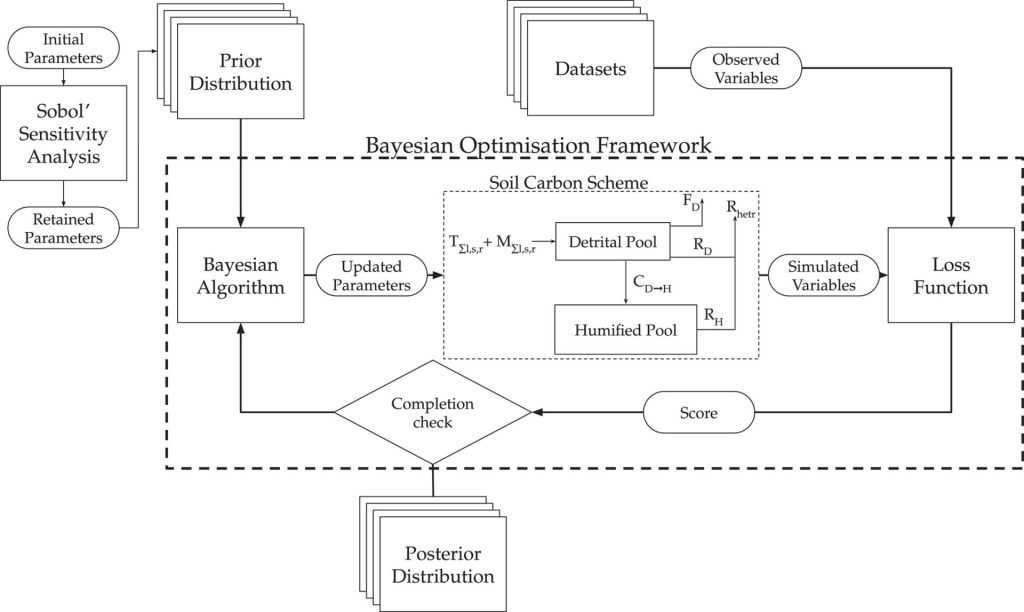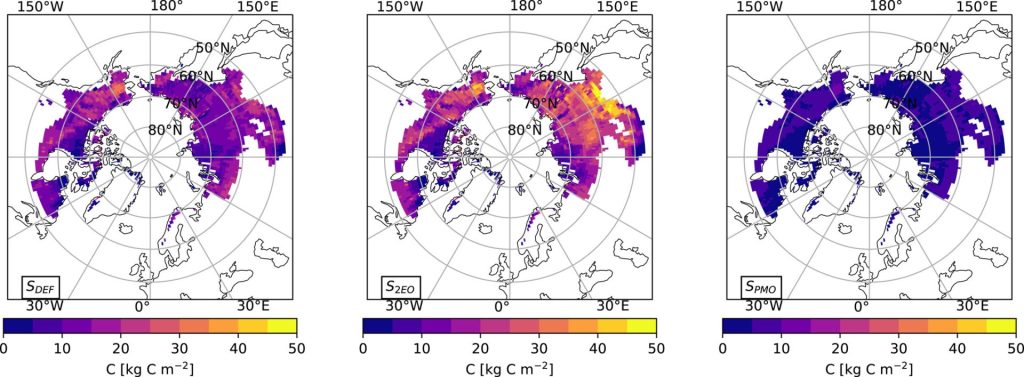Soils store large amounts of organic carbon that could be released into the atmosphere due to climate change, but future projections from numerical models of soil organic carbon dynamics remain highly uncertain.
A recent study by Charles Gauthier used Bayesian optimization techniques and global sensitivity analysis to better constrain the Canadian Land Surface Scheme Including Biogeochemical Cycles (CLASSIC) model’s soil organic carbon parameters.
Getting a handle on how soil stores and releases carbon is critical for modeling climate change, yet global simulations face many challenges due to uncertain parameters and sparse data. The team explored different sets of parameters and tested two types of loss functions, finding that this choice can greatly influence model outcomes.

The best parameter set resulted in a 12% improvement when compared to observations and matched well with global estimates of soil carbon stocks, particularly at high latitudes. However, the study also points out that certain regions—like the vast needle-leaf forests of Siberia—remain poorly observed and contribute to ongoing uncertainty. By flagging these gaps, the research not only offers a more accurate model but also calls for more targeted data collection and optimization approaches going forward, aiming to close the loop on carbon-climate feedbacks for better future predictions.

Gauthier, C. B., Melton, J. R., Meyer, G., Raj Deepak, S. N., & Sonnentag, O. (2025). Parameter optimization for global soil carbon simulations: Not a simple problem. Journal of Advances in Modeling Earth Systems, 17, e2024MS004577. https://doi.org/10.1029/2024MS004577


